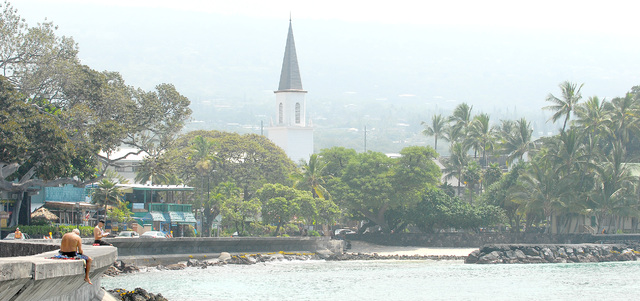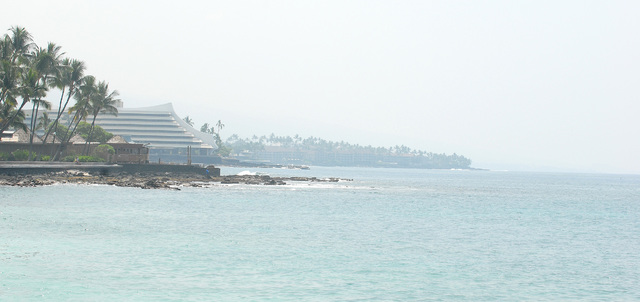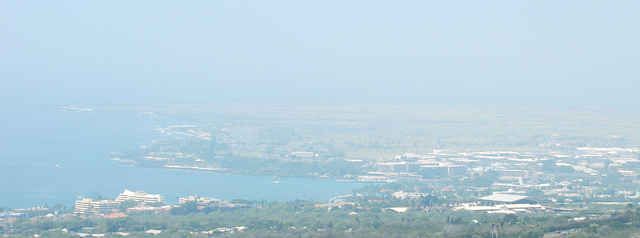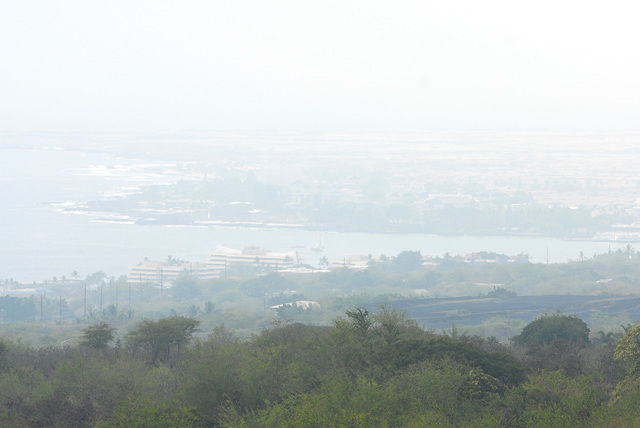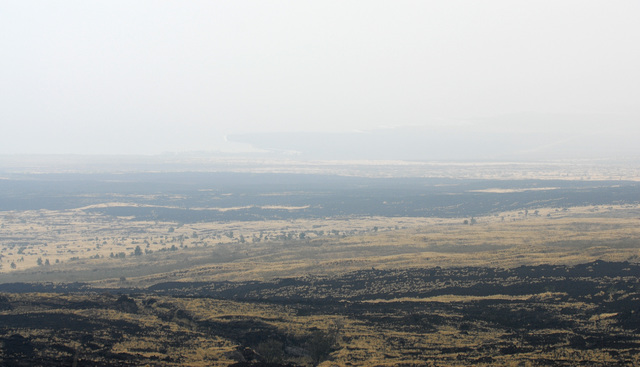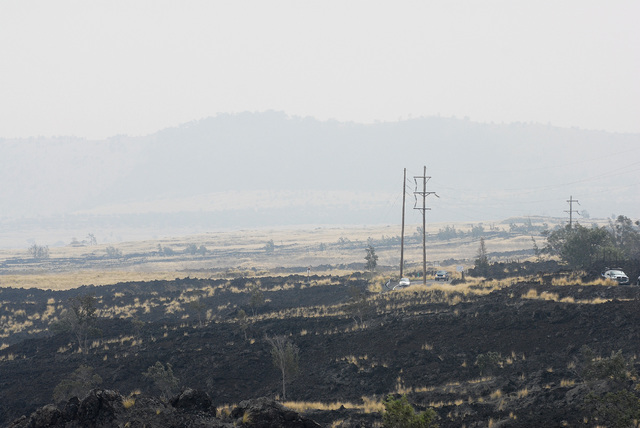New site details all you need to know about living with vog on an active volcano
KAILUA-KONA — For Janis Texeira, vog on the Big Island was more than an inconvenience; it was a health hazard.
Vog, the haze caused by volcanic emissions that includes carbon dioxide and sulfur dioxide, triggered asthma attacks in Texeira, she said, resulting in several trips to the emergency room.
It was at its worst when she was living in Captain Cook in the 1980s, she said, and in 1987 she moved to Colorado because of the vog here.
She eventually moved back to the Big Island, saying she missed home. Since then, the vog hasn’t been as big an issue for her.
“I’ve kinda grown out of it,” she said. “It doesn’t affect me anymore.”
However, vog still affects many residents on the Big Island, causing eye and throat irritation, coughing and shortness of breath.
Now, a new slate of tools has been made available so members of the public, especially those sensitive to vog, can keep an eye on conditions around the island and learn ways to protect themselves.
The dashboard was created through a multi-agency approach and is hosted on a website belonging to the International Volcanic Health Hazard Network. Those agencies include the Hawaii State Department of Health, the U.S. Geological Survey, the National Park Service, Hawaii County Civil Defense and the University of Hawaii at Hilo Center for the Study of Active Volcanoes.
The dashboard is the result of studies and surveys which asked residents what sort of information and data they’d like to see about vog — a smog-like haze containing volcanic dust and gases that’s a staple around West Hawaii.
“People really want advice,” said Health Hazard Network director Claire Horwell during a telephone conference on Thursday. “But they want consistent advice and they want it to be relevant to their lifestyles and they want it to be accessible to them in a number of ways.”
In addition to fact sheets about what vog is and its health effects, the dashboard also covers the effects vog can have on agriculture and water systems as well as forecast data for tracking conditions around the Big Island.
Vog primarily affects the areas of the island southwest of Kilauea, but when tradewinds fall off, particularly in the winter, vog can affect the entire island or state.
Levels of sulfur dioxide and fine particles associated with vog are down in recent years since the 2008 Halemaumau eruption, a fact sheet at the dashboard said.
After that eruption, said Tamar Elias of the U.S. Geological Survey, gas emissions measured at about 10,000 metric tons a day.
In those days, the island experienced levels of sulfur dioxide that the government considered unhealthy for the general population, which triggered recommended evacuations of some areas said John Peard of the Hawaii State Department of Health.
These days, Elias said, it’s closer to 4,000 to 5,000 metric tons of emissions a day.
Peard said since 2010, the island hasn’t seen those unhealthy levels of emissions in recent years, although some instances have been considered unhealthy for “sensitive groups,” such as people with respiratory disorders.
Another difference today, Elias said, is that the majority of emissions are coming from the volcano’s summit, whereas before, gas was only coming out from the east rift zone near Puu Oo.
Before the eruption, emissions from the rift traveled along the island’s coast and sometimes out to sea, Elias said.
Now, though, the plume coming out the summit “hugs the flank of Mauna Loa and travels inland,” Elias said. That means downwind communities are more severely impacted.
Horwell said surveys of residents in Hawaii showed a persistent theme of people concerned about the impact vog can have to their health.
Of 146 people who took the survey, she said, 82 percent said they believed they were suffering health symptoms attributable to vog.
Seventy-eight percent of respondents said they believed vog was damaging to their long-term health, she added, though with the caveat that there “is no scientific evidence” for that.
“It gives us the impression that people are very concerned about the vog at the very least,” she said.
Concern about vog also has an impact on tourists who visit the island.
Vicky Mendez, a repeat visitor to the Big Island from Texas, said earlier this week that she’s staying away from voggy areas out of concerns for her health.
Mendez said she and her family opted out of a tour to the volcano after being advised that those with respiratory problems shouldn’t go.
The study also found that more than half of those surveyed weren’t taking any recommended actions to alleviate the impact of vog on their health.
The dashboard recommends that when vog levels rise, people should limit strenuous exercise and go indoors, sealing gaps around doors and windows if possible.
And while the vog might not always cause health problems in people, it can be an inconvenience in other ways.
J.R. Cao, another visitor to the island, said visibility of the stars has been reduced lately, though he wasn’t certain whether that was because of the vog or because of cloud cover.
That said, he recalled previous visits a couple years ago when visibility was even worse.
“You could hardly see the island when you were out,” he said.
The dashboard will also allow residents to get a picture of current vog conditions throughout the island.
While those forecasts can be very technical, Peard said they made an effort to make them accessible to lay people.
For example, while a sulfur dioxide advisory map gives exact measurements for areas throughout the island, it also color codes those measurements for easy comprehension.
Sulfur dioxide measurements in Kona Thursday for instance were marked green for “good.”
And efforts to raise awareness about vog extend beyond the Internet.
Elias said the agencies involved in raising awareness about vog have also produced posters and brochures that can be stocked at locations throughout the island, giving residents and visitors even more exposure to what they need to know about the hazard.
To access the dashboard: www.ivhhn.org/vog


